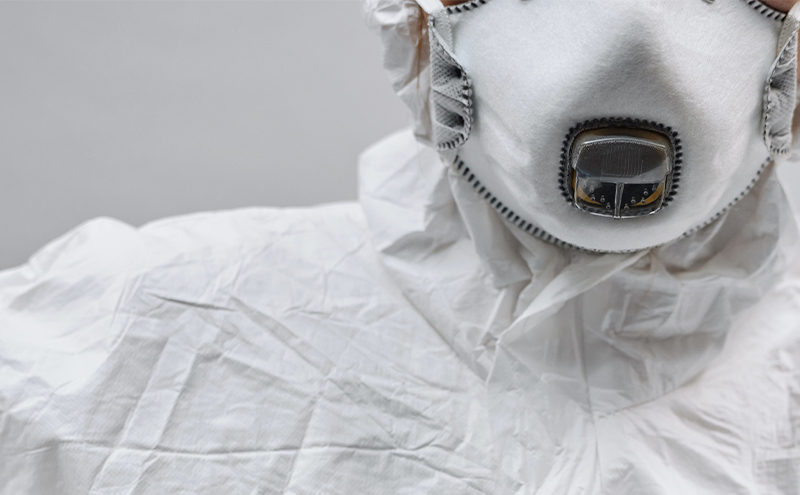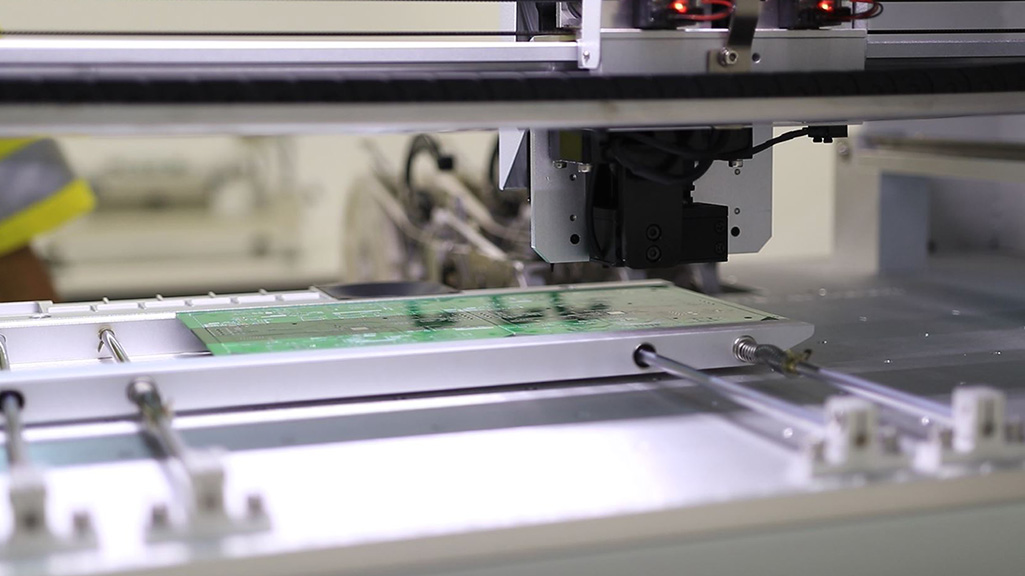Masks are great, to a certain extent. In the context of an emergency, they can assist you in moving from a dangerous situation into safety. For example, suppose you’re not in the vicinity of a shelter or safe haven. In that case, a mask can enable you to get to cover safely by providing you with some protection until you enter the chamber.
Face masks are widely used in several industries, offering protection from the inhalation of dust or specific airborne hazards and stopping the spread of viruses. Although there are many types, masks are not interchangeable. Therefore, ensuring you have the proper protection in an emergency is critical.
While masks can provide appropriate protection against smoke and airborne toxins, they form a small part of an overall emergency response plan. In addition, situations can occur in which donning a mask or respirator is not as effective as sheltering-in-place.
Wearing a mask will protect you from external hazards only if:
- It is the correct mask/respirator, with the right filter
- It is in working condition and available at the time of need
- You understand how to use it and when to use it
- It has been stored, tested, and maintained to OEM instructions
Types of Gas Masks, Respirators, and Escape Hoods
There are several types of face masks and respiratory protective equipment (RPE) available. Each option has several varieties, with differing cautions, limitations, and restrictions of use.
Internationally, RPE and face masks for respiratory protection are classified according to level; some examples include Australian P1, P2 or P3, per AS/NZS 1716:2012, American NIOSH-42CFR84 (for N95 masks), European EN 149-2001 (for FFP2 masks) and Chinese KN95.1
The most common types of single-use face masks used are:
- Surgical Masks (Paper Masks) – generally loose-fitting and do not form a tight seal on the face. They are typically designed to catch water and salvia droplets from coming out of the wearer’s mouth and nose rather than filter the entering air.
- P2, N95s, and P100s – provide a tight seal around the face and filter small substances such as smoke or dust from the air. However, they do not provide adequate protection against gases, fumes, and other toxins.
Half- or full-face respirators are also known as ‘respirators’ or ‘respiratory protective equipment’. Respirators offer a higher level of protection, being tight-fitting with replaceable filters. Respirators can protect wearers against exposure to gases, fumes, or smoke, depending on the type of filter used.
An escape hood is a filtering respiratory protective device for self-rescue in the event of a fire or chemical release. If evacuation or navigation to a safe haven is required, this short-term protective equipment is donned easily.
Escape hoods safeguard against chemical and fire-related gases, particles, or vapours by purifying the inhaled air. However, the type of protection depends on the included filter.
Self-Contained Self-Rescuers (SCSR)
A Self-Contained Self-Rescuer is a closed-circuit breathing apparatus designed to separate and protect the user from the external surrounding atmosphere.
Oxygen regenerative Self-Contained Self-Rescuers such as the DEZEGA Ci-30KS utilise a chemical called KO2 to effectively scrub carbon dioxide produced from the user’s expired air. Oxygen is then exchanged in the chemical process inside the apparatus, allowing the user to breathe in good quality air.
Self-Contained Breathing Apparatus (SCBA)
A Self-Contained Breathing Apparatus (SCBA) is the respirator commonly used by emergency response teams (ERTS). It uses an air tank to supply clean air, so you don’t need to worry about filters. They also protect against higher concentrations of dangerous chemicals. However, they are often heavy and require special training to use and maintain.
SCBA air tanks typically last an hour or less, depending upon their rating and how hard you are breathing; however, they can be replenished.
Using a Mask or Respirator During Evacuation and Emergencies
Inhaling particles can have a range of health effects, from irritation of the lungs and throat to more severe conditions such as bronchitis and heart failure. This is why evacuation and emergency procedures should include the use of Personal Protective Equipment (PPE), such as masks and personal respiratory protective devices to aid safe self-rescue and navigation to a safe haven or shelter-in-place. 2
Can you stay inside and put on a mask?
Within a reduced infiltration shelter, adding respiratory protection may not necessarily reduce exposure. For rapidly approaching large chemical plumes or fire-related hazards, pressurised shelters will provide better protection than remaining within a reduced infiltration shelter with a mask.3
What Can Impact the Use of a Self-Rescue Mask?
How effective a protective respiratory device is in a chemical or hazardous atmosphere is impacted by several variables. For example, PPE for petrochemical facilities at times is often non-gas tight, does not have an external air supply, or has a limited life. Other critical points with masks include:
- Longevity: The use of a respirator and mask is restricted
- Air Supply: Self-rescue masks have a limited capacity to supply breathable air
- Hazard Concentration: Most masks are effective to a set ppm limit; a higher concentration may reduce time and efficiency and have a faster breakthrough time
- Toxic Substance: More poisonous, corrosive gases, such as sulphur or ammonia, have less time available to breathable and will break through the materials at a faster rate, compared to gases with a lower acidity or corrosive nature.
Are you completely safe wearing a well-fitting and correct mask?
RPEs and gas masks contain specific filters for only certain airborne substances; other hazards in the atmosphere may penetrate.
The skin also absorbs some chemicals. Therefore, combining masks with the appropriate PPE, such as protective clothing and eyewear, may safeguard against external dangers.
Do escape masks and respirators help if oxygen levels are low?
No. Standard gas masks and respirators do not provide oxygen and are only suitable to filter the air you breathe. If oxygen levels are low, the risk of suffocation increases.4
How long do the gas masks and respirators last once you are wearing them?
There is no standard answer or time limit for gas masks and respirators. The hazard, environment, and the wearers’ health, plus make, model, and maintenance, are some of the factors which impact its capacity to provide adequate protection. 4
As time varies extensively, an emergency response plan must consider transit to a safe shelter or area before the gas mask and RPE filtering capabilities run out.
If the respiratory protective equipment has the correct hazard filter and fits well, are you always protected?
RPE and gas masks reduce exposure and help safeguard against the inhalation of hazardous substances. However, suppose exposure is beyond the limitations of the mask, through time or concentration. In that case, the filter may not be as effective.
There is also a small risk of leakage, even if the fit has been tested. A small leak is dangerous in large chemical plumes.4
Frequently Asked Questions
Shelter-in-Place (SIP) is a common term used in community and commercial emergency response actions plans. It refers to the process of taking refuge by staying indoors and sealing your environment. Read More.
A blast-resistant building (BRB) is a reinforced structure designed to reduce the harm to personnel and equipment in the event of an accidental or deliberate explosion. BRBs are common within petrochemical plants, including manufacturing and chemical processing. Read More.
A safe haven or refuge chamber is a sealed environment, in which you can take shelter during a hazardous event when evacuation is not possible. Read More.
Removing personnel through evacuation is not always possible. A multitude of factors, including the lack of adequate pre-warning, will significantly impact the emergency action undertaken. As a primary means of protection, sheltering in place is the most survivable option when evacuation is not possible. Read More.
References
- 2020, ‘Face masks and respiratory protective equipment’, Housing Industry Association (HIA), https://hia.com.au/Publications/InformationSheets/whs-20-40-face-masks-and-respiratory-protection
- S. Environmental Protection Agency / U.S. Federal Emergency Management Agency / U.S. Department of Transportation: Technical Guidance for Hazards Analysis — Emergency Planning for Extremely Hazardous Substances. Washington, D.C.: U.S. Government Printing Office, December 1987.
- Rogers, G.O., Watson, A.P., Sorensen, J.H., Sharp, R.D. and Carnes, S.A., 1990. “Evaluating Protective Actions for Chemical Agent Emergencies”, ORNL-6615, Oak Ridge National Laboratory, Oak Ridge, TN.
- 2020, ‘Respirator Fact Sheet’, Centres for Disease Control and Prevention, https://www.cdc.gov/niosh/npptl/topics/respirators/factsheets/respfact.html






